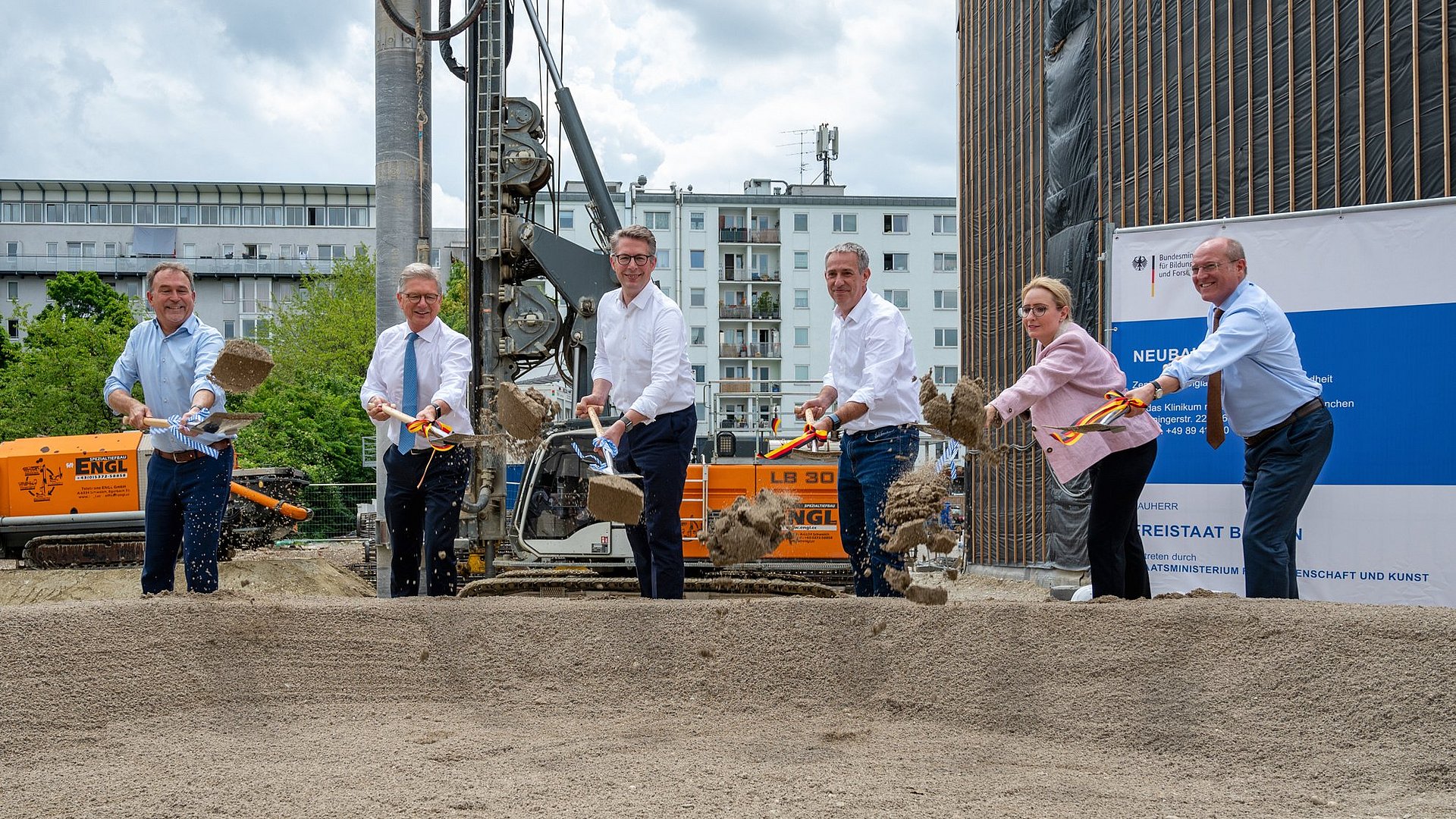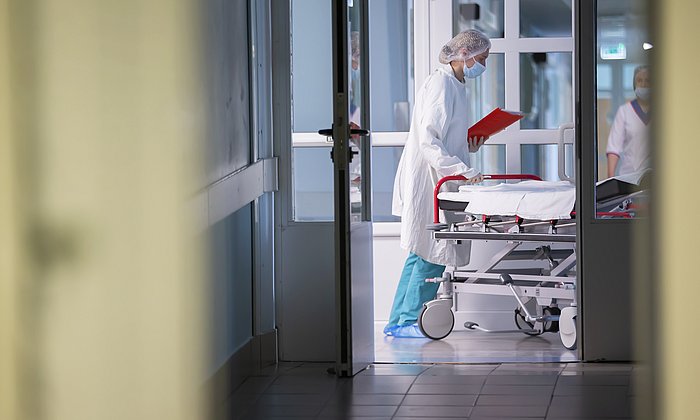New infrastructure for pioneering research at the TUM University Hospital
Construction begins on new Center for Digital Medicine and Health

The goal of digital medicine is to identify diseases more quickly, reliably, and in new ways; to tailor therapies to individual patients; and, crucially, to make health data available for large-scale research while protecting privacy. TUM’s ZDMG will take on these challenges from a high-tech facility on the grounds of the TUM University Hospital.
The groundbreaking ceremony took place on Friday, June 27, with Bavarian Science Minister Markus Blume in attendance. The state-of-the-art research building, located in Munich’s Haidhausen district, is expected to be completed by the end of 2027. It will offer approximately 2,050 square meters of usable space and accommodate around 140 staff members. The facility will support the development of innovative AI and data science methods for medical applications. Among its features will be a data observatory and a high-performance computing cluster. The €47.1 million project is being funded jointly by the Free State of Bavaria and the Federal Ministry of Research, Technology and Space.
"Society-centered research and innovation"
Bavaria’s Minister of Science, Markus Blume, emphasizes: “Digital, connected, with heart and expertise – that’s the formula for the future of medicine in Bavaria. Today’s groundbreaking ceremony for TUM’s Center for Digital Medicine and Health (ZDMG) once again reflects the unique TUM spirit, which brings groundbreaking achievements to Bavaria through innovative visions and the courage to realize them. The ZDMG is a truly forward-looking initiative that brings together AI, data science, and everyday clinical practice.The new building, located right next to the Center for Multiple Sclerosis and TranslaTUM, offers more than 2,000 square meters of space for 140 employees and is designed to foster innovation and collaboration. The Free State of Bavaria is supporting the project with around 25 million euros. And there’s more to come: with the Highmed Agenda and the M1 – Munich Medicine Alliance, we are laying the groundwork for top-tier medical care in Bavaria over the long term. In this way, Bavaria is – and will remain – a driving force in shaping the medicine of tomorrow.”
Prof. Thomas F. Hofmann, President of TUM, commented: “The Center for Digital Medicine and Health embodies the spirit of TUM: interdisciplinary cutting-edge research with the clear goal of rapidly translating findings into practice. An essential quality of this center is that the research and innovation produced here always keep society in mind – for example through trustworthy AI models and a strong emphasis on data protection.”
Building bridges to Garching
The center’s location is no coincidence. It sits in close proximity to numerous clinics, institutes, and research facilities – including the Central Institute for Translational Cancer Research (TranslaTUM) and the new Center for Multiple Sclerosis and Neurosciences building, set for completion in 2026. Dr. Martin Siess, Medical Director of the TUM University Hospital, stated: “With the new Center for Digital Medicine and Health on our campus, we are integrating the deep expertise of our clinician scientists in AI and data science even more closely with patient care, thereby advancing the use of artificial intelligence in clinical practice.”
Professor Stephanie Combs, Dean of the TUM School of Medicine and Health, added: “The most innovative research happens across disciplines. With the ZDMG, we are not only creating a high-tech building where scientists can collaborate and develop forward-thinking ideas across traditional boundaries – we are also building another robust bridge from the TUM School of Medicine and Health to other TUM schools, such as the TUM School of Computation, Information and Technology in Garching and the Munich Data Science Institute. The ZDMG is another TUM role model that not only advances science but also grounds education in an interdisciplinary framework and enables rapid translation into modern patient care at the TUM University Hospital.”
Basic research with practical relevance
The center is led by Prof. Daniel Rückert, a recipient of the Leibniz Prize. “At the ZDMG, we will conduct fundamental research into the digital medical applications of the future,” he said. “But being close to clinical practice is equally important to us.” For example, in collaboration with colleagues at the Center for Multiple Sclerosis, researchers plan to develop AI-based decision-support tools that combine data from imaging, individual genetic profiles, and other sources. Together with the TUM University Hospital German Heart Center, new approaches will be developed to detect the risk of coronary heart disease at an early stage. Privacy-preserving AI methods will also be used to combine imaging data from multiple clinics to improve early detection of diseases such as breast and lung cancer.
- The ZDMG is an independent research center associated with the Munich Data Science Institute at TUM.
Technical University of Munich
Corporate Communications Center
- Paul Hellmich
- paul.hellmich@tum.de
- presse@tum.de
- Teamwebsite
Contacts to this article:
Prof. Dr. Daniel Rückert
Technical University of Munich
Chair of Artificial Intelligence in Healthcare and Medicine
+49 89 4140 8587
daniel.rueckert@tum.de




